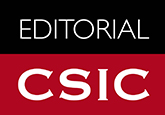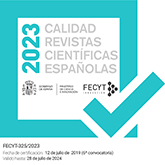Delphinium fissum subsp. sordidum (Ranunculaceae) in Portugal: distribution and conservation status
DOI:
https://doi.org/10.3989/ajbm.2467Keywords:
Critically Endangered, Delphinium, IUCN, Mines of Santo Adrião, Ranunculaceae, Trás-os-MontesAbstract
Delphinium fissum subsp. sordidum has been found in calcareous and schistaceous slopes on the Mines of Santo Adrião, Trás-os-Montes region —close to Bragança, northeastern Portugal—. It is the first record of this taxon in Portugal and the westernmost locality of its general distribution area. Its conservation status, according to the most recent IUCN categories and criteria, should be “Critically Endangered” in Portugal.
Downloads
References
Aedo, C., Medina, L., Barberá, P. & Fernández-Albert, M. 2015. Extinctions of vascular plants in Spain. Nordic Journal of Botany 33: 83-100. https://doi.org/10.1111/njb.00575
Ascaso, J. & Pedrol, J. 1991. De plantis vascularibus praesertim ibericis I. Fontqueria 31: 135-140.
Ba-ares, Á., Blanca, G., Güemes, J., Moreno, J.C. & Ortiz, S. (eds.) 2008. Lista roja 2008 de la flora vascular espa-ola. Dirección General de Medio Natural y Política Forestal, Madrid.
Ba-ares, Á., Blanca, G., Güemes, J., Moreno, J.C. & Ortiz, S. (eds.) 2010. Atlas y Libro Rojo de la Flora Vascular Amenazada de Espa-a. Adenda 2010. Dirección General de Medio Natural y Política Forestal, Madrid.
Blanché, C. 1990. Delphinium L. subgen. Delphinium: origin and evolutionary trends. Collectanea Botanica 19: 75-95. https://doi.org/10.3989/collectbot.1990.v19.118
Blanché, C. 1991. Revisió biosistemática del gènere Delphinium L., a la Península Ibèrica i a les Illes Balears. Institut d´Estudis Catalans. Arxius de la Secció de Ciències, n.º 98, Barcelona.
Blanché, C. & Molero, J. 1986. Delphinium L. In: Castroviejo, S. & al. (eds.), Flora iberica, vol. 1. Real Jardín Botánico de Madrid CSIC, Madrid.
Bocquet, G., Wilder, B. & Kiefer, H. 1978. The messinian model -a new outlook for the floristics and systematics of the Mediterranean area. Candollea 38: 269-287.
Ellstrand, N.C. 1992. Gene flow by pollen: implications for plant conservation genetics. Oikos 63: 77-86. https://doi.org/10.2307/3545517
Heywood, V.H. & Iriondo, J.M. 2003. Plant conservation: old problems, new perspectives. Biological Conservation 113: 321-335. https://doi.org/10.1016/S0006-3207(03)00121-6
IUCN. 2012. Guidelines for application of IUCN Red List criteria at regional and national levels: version 4.0. IUCN Species Survival Commission, Gland and Camnbrige.
IUCN. [2017]. Guidelines for using the IUCN Red List Categories and criteria: version 12. [http://www.iucnredlist.org/documents/ RedListGuidelines.pdf]
Jabbour, F. & Renner, S. 2012. A phylogeny of Delphinieae (Ranunculaceae) shows that Aconitum is nested within Delphinium and that Late Miocene transitions to long life cycles in the Himalayas and Southwest China coincide with bursts in diversification. Molecular Phylogenetics and Evolution 62: 928-942. https://doi.org/10.1016/j.ympev.2011.12.005 PMid:22182994
Lande, R. 1998. Anthropogenic, ecological and genetic factors in extinction and conservation. Researches on Population Ecology 40: 259-269. https://doi.org/10.1007/BF02763457
López-Pujol, J., Bosch, M., Massó, S., Molero, J., Simon, J., Rovira, A.M. & Blanché, C. 2014. Estudi preliminar de variabilitat isoenzimàtica de Delphinium bolosii al Parc Natural de Sant Llorenç del Munt i l'Obac. Diputació de Barcelona, Barcelona.
Malyutin, N.I. 1973. The phylogeny and the taxonomy of the Delphinium L. genus. Botanischeskii Zhurnal 58: 1710-1722.
Menges, E. S. 1991. The application of minimum viable population theory to plants. In: Falk, D.A. & Holsinger, K.E. (eds.), Genetics and Conservation of Rare Plants. Oxford University Press, New York.
Orellana, M.R., López-Pujol, J., Blanché, C. & Bosch, M. 2007. Genetic diversity in the endangered dysploid larkspur Delphinium bolosii and its close diploid relatives in the series Fissa of the Western Mediterranean area. Biological Journal of the Linnean Society 92: 773-784. https://doi.org/10.1111/j.1095-8312.2007.00910.x
Pisanu, S., Filigheddu, R. & Farris, E. 2009. The conservation status of an endemic species of northern Sardinia: Centaurea horrida Badarò (Asteraceae). Plant Biosystems 143: 275-282. https://doi.org/10.1080/11263500902722493
Pitarch García, R. 2002. Estudio de la flora y vegetación de las sierras orientales del Sistema Ibérico: La Palomita, Las Dehesas, El Rayo y Mayabona (Teruel). Serie Investigación n.º 38. Consejo de Protección de la Naturaleza de Aragón, Zaragoza.
Ramírez-Rodríguez, R. & Amich, F. 2014. Notes on rare and threatened flora in western-central Iberia. Lazaroa 35: 221-226. https://doi.org/10.5209/rev_LAZA.2014.v35.46571
Sequeira, M., Espirito-Santo, M.D., Capelo, J. & Honrado, J. (coords.). 2011. Checklist da Flora de Portugal (Continental, Açores e Madeira). Associação Lusitana de Fitossociologia, Lisboa.
Simon, J., Bosch, M., Blanché, C. & Molero, J. 1995. Delphinium. Flora Mediterranea 5: 323-331.
Torres, N., Sáez, L., Rosselló, J.A. & Blanché, C. 2000. A new Delphinium subsp. from Formentera (Balearic Islands). Botanical Journal of the Linnean Society 133: 371-377. https://doi.org/10.1111/j.1095-8339.2000.tb01552.x
Wang, W. T. 1962. Critical review of the genus Delphinium from the Ranunculaceaous Flora of China. Acta Botanica Sinica 10: 87-282.
Published
How to Cite
Issue
Section
License
Copyright (c) 2017 Consejo Superior de Investigaciones Científicas (CSIC)

This work is licensed under a Creative Commons Attribution 4.0 International License.
© CSIC. Manuscripts published in both the printed and online versions of this Journal are the property of Consejo Superior de Investigaciones Científicas, and quoting this source is a requirement for any partial or full reproduction.All contents of this electronic edition, except where otherwise noted, are distributed under a “Creative Commons Attribution 4.0 International” (CC BY 4.0) License. You may read here the basic information and the legal text of the license. The indication of the CC BY 4.0 License must be expressly stated in this way when necessary.
Self-archiving in repositories, personal webpages or similar, of any version other than the published by the Editor, is not allowed.















